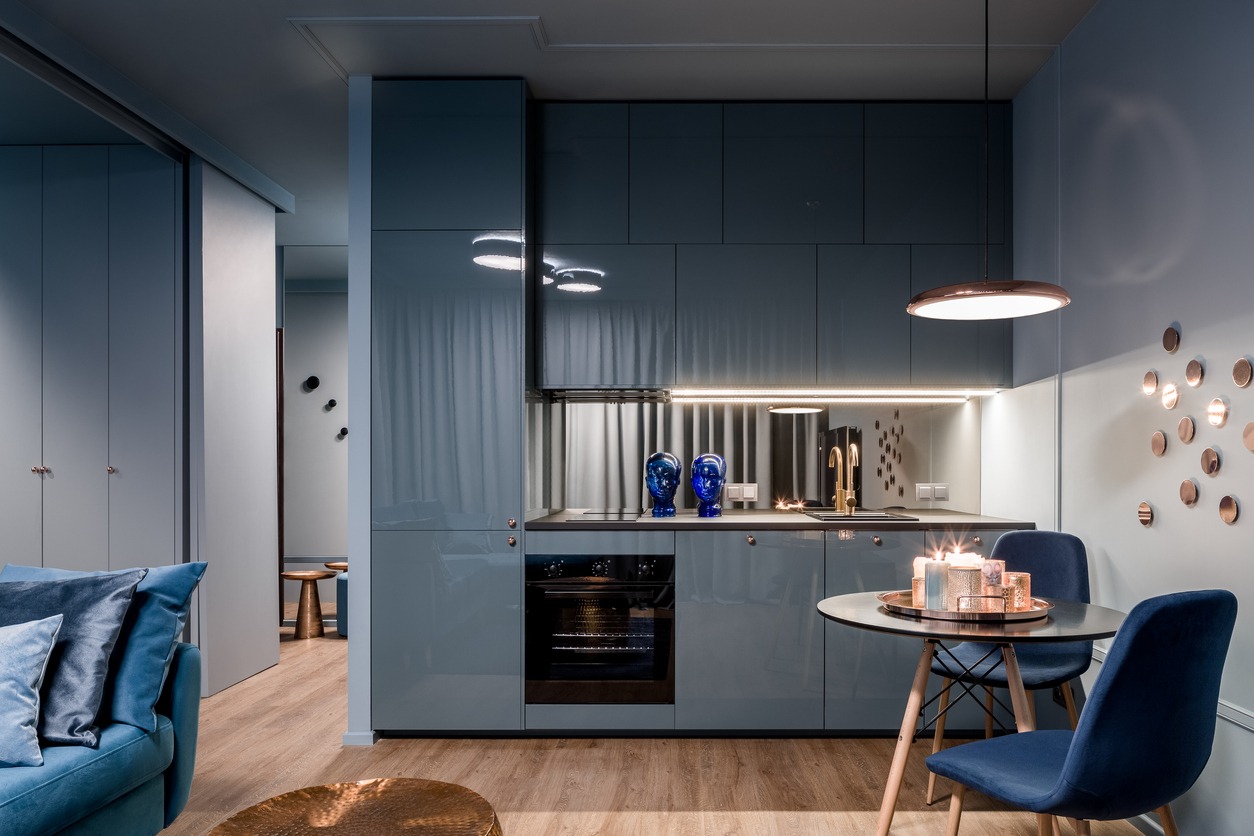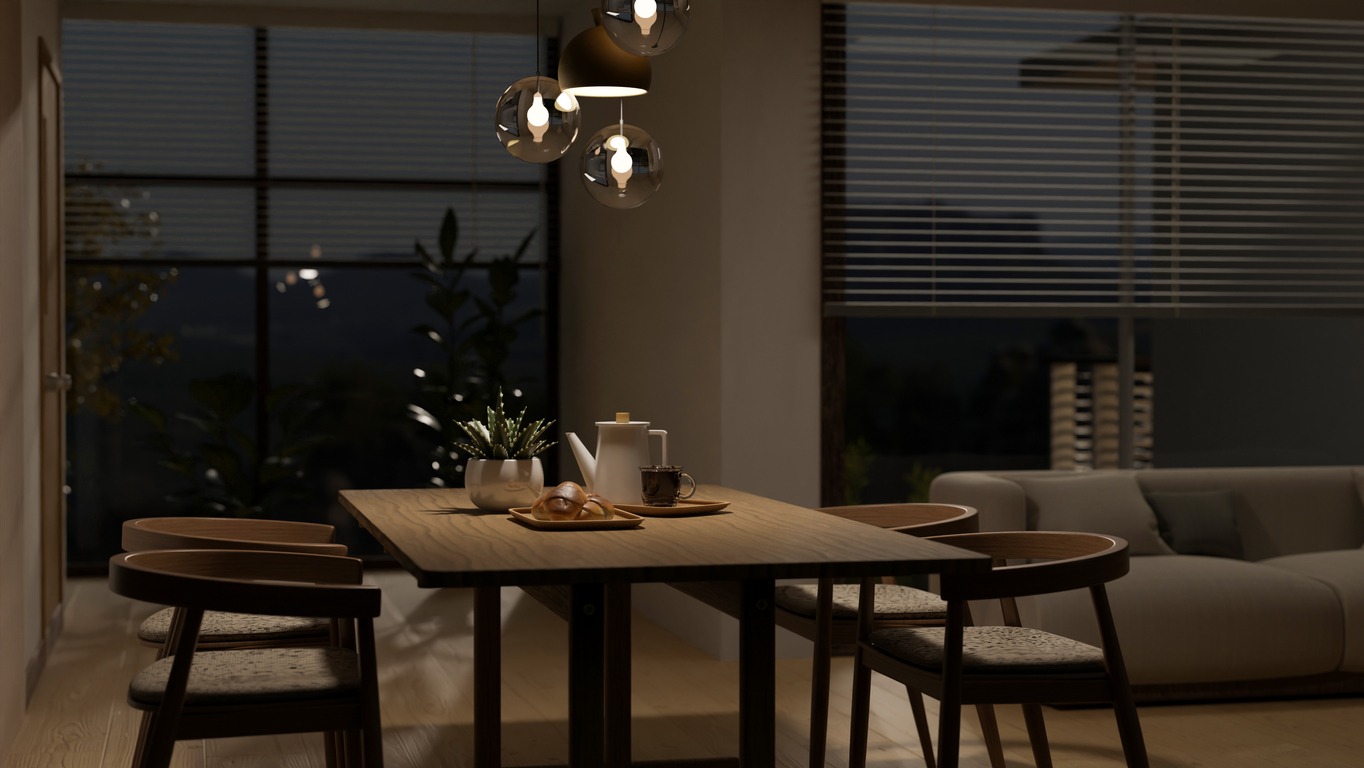Brightening a room with low natural light can be a tricky challenge, but it’s a common issue many of us face. Rooms without ample sunlight can feel dull and uninviting. Fortunately, transforming these spaces doesn’t have to be expensive. Budget-friendly solutions are essential for making these rooms feel more vibrant and welcoming without straining your finances.
Let us take a look at some of the practical and affordable ways to brighten up any low-light room, ensuring your home feels cozy and well-lit, no matter the time of day.
Maximize Natural Light
Enhancing the natural light in your room is a great starting point for brightening up a space. Here are a few effective strategies for making the most of the available sunlight.
Using Sheer Curtains
Heavy drapes and blinds can block out precious natural light. Instead, opt for sheer curtains that allow sunlight to filter through while still providing some privacy. Sheer curtains come in a variety of styles and colors, so you can find an option that complements your decor while maximizing the light.
Keeping Windows Clean
Dust and grime on windows can significantly reduce the amount of light entering a room. Regularly cleaning your windows, both inside and out, ensures that you are not missing out on any available sunlight. A simple solution of water and vinegar can effectively remove dirt and leave your windows sparkling.
Strategic Mirror Placement
Mirrors can be powerful tools for enhancing natural light. Placing mirrors opposite windows can help reflect light throughout the room, making it appear brighter and more spacious. Additionally, using mirrored furniture or decorative mirrors on walls can further amplify the light, creating a more luminous atmosphere.
Smart Lighting Solutions
When natural light isn’t enough, smart lighting solutions can effectively brighten up a room without hefty expenses. Here, we explore various affordable lighting options and the benefits of adjustable lighting to enhance your space.
Affordable Lighting Options
Making strategic lighting choices can drastically improve a room’s ambiance. Let’s look at some budget-friendly options.
- LED Bulbs and Strip Lights: LED bulbs are a popular choice due to their energy efficiency and longevity. They consume less power and last longer than traditional bulbs, which makes them cost-effective in the long run. Additionally, LED strip lights offer a versatile solution for accent lighting. These strips can be placed under cabinets, around mirrors, or along shelves to provide a subtle yet impactful boost in illumination.
- Floor and Table Lamps: Floor and table lamps are simple yet effective additions to brighten up any room. They are available in various styles and designs, making it easy to find options that match your decor. Floor lamps can illuminate dark corners, while table lamps can provide focused light for reading or working. Adjustable lamps with multiple brightness settings offer added flexibility.
- Motion Sensor Lights: Motion sensor lights are both practical and energy-saving. These lights automatically turn on when they detect movement and switch off when the room is unoccupied. This feature is particularly useful in spaces like hallways, closets, or bathrooms, where lighting is needed only occasionally. They help save on electricity bills by ensuring lights are used only when necessary.
Benefits of Adjustable Lighting
Adjustable lighting is essential for creating a versatile and comfortable living environment. Here are some key benefits:
- Customizable Ambiance: Adjustable lighting allows you to set the perfect mood for any occasion, whether it’s a cozy evening or a lively gathering.
- Reduced Eye Strain: Being able to control the brightness helps reduce eye strain, especially during tasks that require focused attention, like reading or working.
- Energy Efficiency: Dimming lights when full brightness is not needed can help save energy and extend the lifespan of your bulbs.
- Enhanced Functionality: Different activities require different lighting levels. Adjustable lighting ensures you have the right amount of light for any task, enhancing the functionality of your living space.
By incorporating these smart lighting solutions, you can significantly enhance the brightness and comfort of your home, making it a more inviting place without exceeding your budget.
Creative Use of Colors
Colors play a crucial role in brightening up a room, especially one with limited natural light. By making smart color choices and incorporating vibrant accessories, you can transform a dim space into a lively and welcoming environment.
Choosing Light, Reflective Paint Colors
Light, reflective paint colors can significantly enhance a room’s brightness. Shades of white, beige, pale gray, and pastels are excellent choices for walls and ceilings. These colors reflect light rather than absorb it, making the room appear more spacious and airy. For an added touch, consider using a satin or semi-gloss finish, which reflects even more light and adds a subtle sheen to the walls.
Using Bright and Colorful Accessories
Bright and colorful accessories can inject life into a room and create focal points that draw the eye. Consider incorporating items such as vibrant throw pillows, bold rugs, colorful vases, and lively artwork. These elements can add pops of color and personality without overwhelming the space. Accessories are also easy to change, allowing you to update the look of your room with minimal effort and expense.
Tips for Color Coordination
Effective color coordination is key to creating a harmonious and visually appealing space. Here are some tips to help you get it right:
- Choose a Base Color: Start with a neutral or light base color for the majority of the room. This will provide a blank canvas, making it easier to incorporate other colors.
- Add Accent Colors: Select one or two accent colors that complement your base color. Use these accents in accessories, such as cushions, curtains, or artwork, to add depth and interest.
- Consider the 60-30-10 Rule: A common interior design rule suggests using 60% of a dominant color, 30% of a secondary color, and 10% of an accent color. This helps create a balanced and cohesive look.
- Balance Bold Choices: If you opt for bold colors, use them sparingly. A brightly colored piece of furniture or a statement wall can be balanced with more neutral tones elsewhere in the room.
- Use Color Wheel for Guidance: The color wheel is a handy tool for finding complementary and harmonious color schemes. Colors opposite each other on the wheel, such as blue and orange, create vibrant contrasts, while adjacent colors, like blue and green, offer a more serene feel.
By creatively using colors, you can brighten and rejuvenate any room. The right paint, accessories, and color coordination can transform your space into a cheerful and inviting haven.
Decorative Elements
Incorporating the right decorative elements can greatly enhance the brightness and appeal of a room with limited natural light. Here are some effective strategies for using reflective and metallic décor, light-colored furniture and textiles, and light-enhancing wall art.
Adding Reflective and Metallic Décor
Reflective and metallic décor items can bounce light around a room, making it feel brighter and more spacious. Consider adding mirrors, metallic picture frames, and decorative items made of glass, chrome, or brass. These elements catch and reflect light, creating a sense of depth and luminosity. For a subtle touch, you can also use reflective surfaces on smaller items like vases, candle holders, and trays.
Using Light-Colored Furniture and Textiles
Light-colored furniture and textiles can significantly brighten a room. Opt for furniture in shades of white, cream, light gray, or pastel hues. These colors reflect more light compared to dark furniture, helping to create an airy and open feel. Similarly, choose light-colored textiles such as curtains, rugs, and upholstery. These can make a room appear larger and more inviting.
Incorporating Light-Enhancing Wall Art
Wall art can also play a crucial role in enhancing the light in a room. Select artwork with light colors and reflective qualities. Paintings or prints with bright skies, landscapes, or abstract designs in pale tones can add a sense of openness. Additionally, consider framing artwork with metallic or glossy frames to reflect light and add a touch of elegance.
Here are some specific tips to maximize the effect:
- Mirrored Wall Art: Mirrors framed as art pieces not only serve as decoration but also amplify the light in the room.
- Glass and Acrylic Art: Artwork made from or encased in glass or acrylic can beautifully reflect light, contributing to a brighter atmosphere.
- Strategic Placement: Place wall art where it can catch natural light, such as opposite windows or near light sources, to enhance its reflective properties.
Reflective and metallic décor, light-colored furniture and textiles, and strategically chosen wall art can all contribute to a lighter, more luminous living space.
Greenery and Plants
Adding greenery and plants to your home can breathe life into any space, especially in low-light rooms. Indoor plants not only enhance the aesthetic appeal but also offer various health benefits. Here, we explore the benefits of indoor plants, recommend low-maintenance varieties, and share creative plant placement ideas.
Benefits of Indoor Plants for Low-Light Rooms
Indoor plants can transform a dim room into a more vibrant and inviting space. Here are some key benefits:
- Air Purification: Many indoor plants can help purify the air by removing toxins and increasing oxygen levels, creating a healthier environment.
- Stress Reduction: Studies have shown that being around plants can reduce stress and improve mood, contributing to overall well-being.
- Enhanced Aesthetics: Plants add color, texture, and a touch of nature to your indoor spaces, making them more appealing and lively.
- Humidity Regulation: Certain plants can help maintain humidity levels in a room, which can be beneficial for your skin and respiratory health.
Low-Maintenance Plant Recommendations
Not all plants require abundant sunlight or extensive care. Here are some low-maintenance options that thrive in low-light conditions:
- Snake Plant (Sansevieria): Known for its hardiness, the snake plant can tolerate low light and irregular watering.
- ZZ Plant (Zamioculcas zamiifolia): This plant is almost indestructible, thriving in low light and requiring minimal water.
- Pothos (Epipremnum aureum): Pothos is an easy-to-care-for plant that can grow well in low light and can even thrive in water.
- Philodendron: Another low-light lover, philodendrons are forgiving plants that adapt well to various conditions.
- Peace Lily (Spathiphyllum): This plant not only thrives in low light but also blooms beautiful white flowers, adding elegance to your room.
Creative Plant Placement Ideas
Placing plants creatively can enhance their visual impact and maximize the benefits they bring to your space. Here are some ideas:
- Hanging Planters: Utilize vertical space by hanging planters from the ceiling or walls. This can be especially effective in small rooms where floor space is limited.
- Corner Stands: Place a tall plant stand or a series of shelves in a dim corner to add greenery without cluttering the space.
- Window Sills: Even in low-light rooms, window sills can provide enough light for some plants. Arrange smaller plants along the sill for a charming display.
- Bookshelves: Integrate plants into your bookshelves to create a dynamic and natural look. Trailing plants like pothos can cascade down the shelves beautifully.
- Bathrooms: Many low-light plants thrive in the humidity of bathrooms. Place a small potted plant on the vanity or a hanging plant near the shower for a fresh touch.
By incorporating greenery into your home, you can enjoy the numerous benefits plants offer while enhancing the overall aesthetic of your low-light rooms. With the right plant choices and creative placement, you can create a vibrant and healthy indoor environment.
Conclusion
Brightening a low-light room doesn’t have to be expensive or complicated. By maximizing natural light, using smart lighting solutions, incorporating creative colors, adding decorative elements, and introducing greenery, you can transform any space into a bright and inviting area.
If you need professional help bringing more light and color into your home, contact Custom Painting, Inc. at 925-294-8062 or use our contact form. Our team is ready to assist you in creating a beautifully illuminated space that fits your style and budget.



